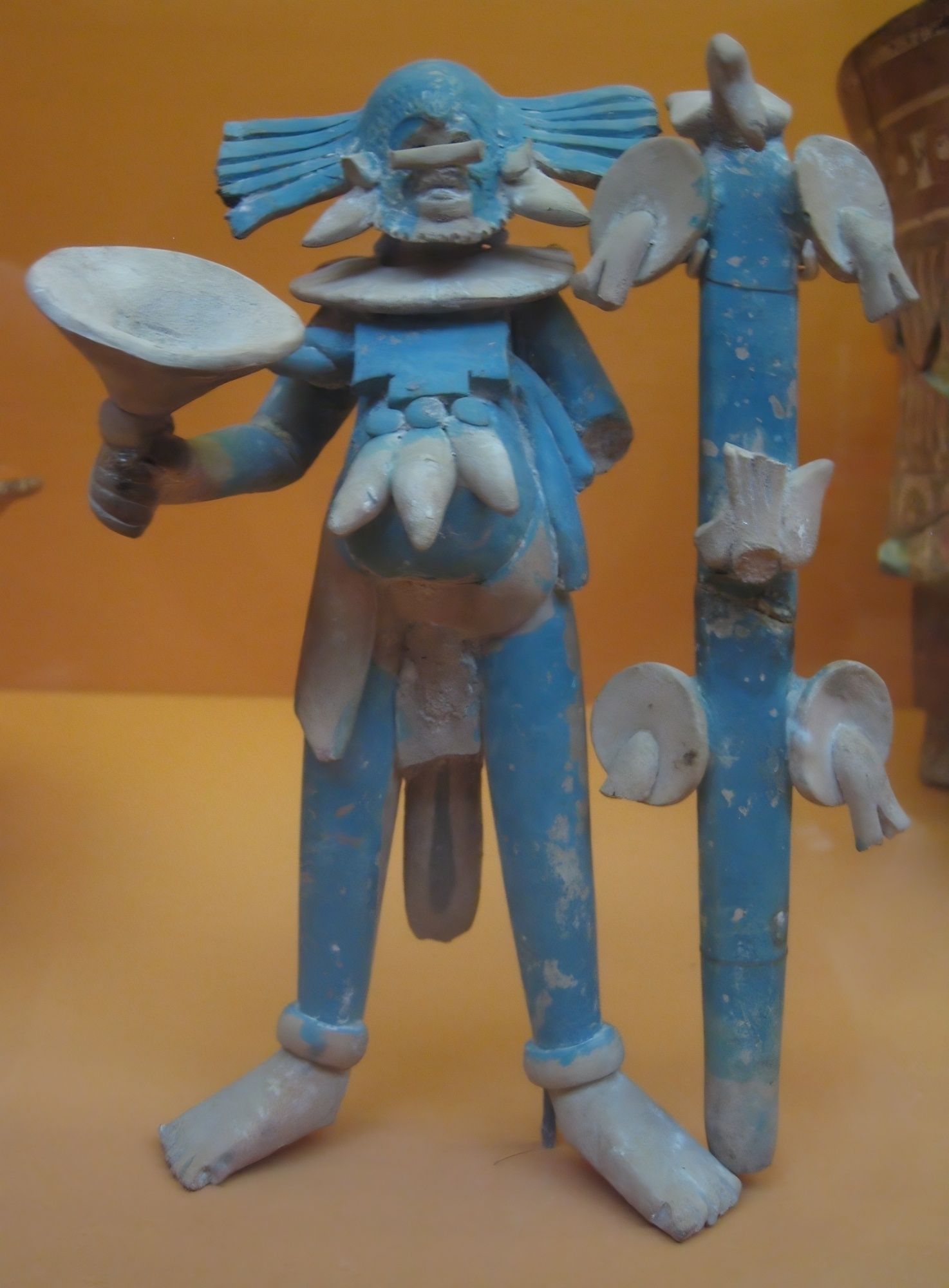🔵 What is the secret of Maya blue?
Follow us on Google News (click on ☆)
Maya blue, a unique pigment, combines organic indigo with inorganic palygorskite. This mixture provides exceptional stability against sunlight and acids, allowing the color to survive for centuries in tropical climates. The Maya used this blue in sacred contexts, linked to water, rain, and fertility.

Ancient Maya art: male ceramic figurine painted in Maya blue after firing. From the island of Jaina.
The discovery of the composition of Maya blue in the 1960s marked a turning point. Researchers later understood that its creation was linked to rituals involving copal incense. This process, combining indigo and palygorskite during the burning of copal, was likely reserved for an elite group of artisans.
The color blue was deeply sacred to the Maya, associated with the rain god Chaac. The artisans who mastered the production of Maya blue possessed esoteric knowledge, probably passed down within the royal family. This restricted knowledge explains the rarity and value of the pigment.
Recent analyses have traced the origin of the palygorskite used in Buenavista del Cayo back to Sacalum, located more than 233 miles (375 km) away. This distance suggests trade routes, likely maritime, for transporting this precious material. These routes offered security and efficiency in a context of constant warfare.
Future research will focus on identifying the sources of palygorskite used by different Maya sites. The abundance of this pigment in Buenavista, a modest center, raises questions about its religious or political importance. Maya blue remains a testament to the ingenuity and spirituality of the Maya.
How has Maya blue stood the test of time?
Maya blue owes its durability to the unique combination of indigo and palygorskite. This particular chemical structure protects it from degradation caused by light and acids.
Palygorskite acts as a molecular cage, trapping indigo molecules. This protection explains why the pigment has survived in harsh tropical conditions.
Maya rituals, involving the burning of copal, may have played a role in stabilizing the pigment. The heat could have facilitated the integration of indigo into the palygorskite structure.
This exceptional resilience makes Maya blue a subject of study for scientists seeking to develop durable pigments.
Why was blue so important to the Maya?
Blue symbolized water, rain, and fertility—vital elements for an agricultural civilization. This color was associated with Chaac, the rain god, central to Maya cosmology.
Human sacrifices and altars painted blue highlight its religious significance. The pigment was reserved for ceremonies and sacred objects, reinforcing its divine status.
Today, Maya blue offers us a glimpse into the beliefs and advanced techniques of the ancient Maya.